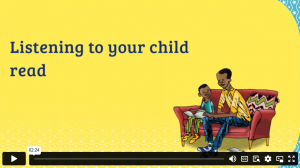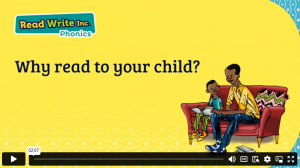Read Write Inc Phonics at Perry Hall MAT
Read Write Inc. Phonics, developed by Ruth Miskin in 2002, is a leading phonics program in the UK that is aimed at teaching children how to read.
RWI caters to students from Reception to Year 4, including those with special educational needs in older year groups. The program offers daily phonics lessons, over 300 decodable storybooks and home readers, spelling and writing activities.
RWI aims to help all of the children in our school to reach the expected standard of the phonics screening check, develop reading fluency and comprehension, foster cooperative behavior, articulate ideas and understanding, and gain confidence in spelling and writing.

RWI Structure
Click on the links below to find out more about how RWI Phonics is structured and how your child will progress.
Phonics Screening
|
The phonics screening check takes place every year in the summer term in England for Year 1 children. This is an informal process for checking the phonics knowledge of each of your children. It is not a formal test, so it’s important that when children sit down with their teacher, they are relaxed, comfortable and as confident as they can be to undergo the 40-word phonics screening check. We support this by completing the phonics checks in their classrooms, where they are comfortable and with a familiar adult. Click here to read more information from the gov.uk website. |
 |
How to help your child
Click on the videos below to learn more about supporting your child.
Reading at home
How do I listen to my child read?
- Your child has a Storybook matched to the sounds and words they know – a decodable book – so they should be able to read all the words.
- Please avoid saying, “This book is too easy for you!” but instead say “I love how well you can read this book!”
What will my child bring home to read?
- ‘Last and past’ Storybooks: contain sounds and words the children know. This is the Storybook they have just read at school and maybe some they have read before, for extra practice. Please don’t worry that books are too easy.
- Children enjoy re-reading stories they know well. Their speed and understanding improves on every read.
- Book Bag Books: matched to the Storybooks children read in school and used for extra practice. They include many of the same reading activities that we use in class and include parent guidance.
- More Storybooks and Non-fiction books: matched to the sounds and words your child knows well.
- Picture books to share with you: read these stories to children or encourage them to retell the story by looking at
the pictures. They are not expected to read the story themselves. - Speed Sounds cards: for children to practise reading speedily. If needed, show your child the picture side of the card to help them remember the sound.
- Red Word book pages: challenge your child to read the Red Words speedily across the rows and down the columns.
- Set a timer – can they beat yesterday’s time?
What do I do with the picture books?
One of the most important things you can do as a parent at home is read to your child. Loving stories is important because children who love stories want to read stories for themselves. Children who read a lot become better readers.
Here are some top tips for story time:
-
- make it a treat – introduce each new book with excitement
- make it a special quiet time – cuddle up!
- show curiosity in what you’re going to read
- read the story once without stopping so they can enjoy the whole story. If you think your child might not understand something say
- something like ‘Oh I think what’s happening here is that…”
- chat about the story e.g. I wonder why he did that? Oh no, I hope she’s not going to…
- avoid asking questions to check what they remember
- link to other stories and experiences you have shared e.g. this reminds me of…
- read favourite stories over and over again – encourage your child to join with the bits they know. Avoid saying ‘not that story again!’
- use different voices – be enthusiastic!
- love the book – read with enjoyment.
Useful Resources
Parents FAQs
Where else can I find information?
Watch video tutorials on http://www.ruthmiskin.com/en/parents/ to help you to understand more about Read Write Inc. Phonics and how to help your child read and write at home.
Other useful websites:
Ruth Miskin Facebook: https://www.facebook.com/miskin.education
Free e-books for home reading: http://www.oxfordowl.co.uk/Reading/
YouTube Channel – https://www.youtube.com/ruthmiskintrainingedu?mc_cid=63bfb74b56&mc_eid=4ec2ad9cea
How can I support my child’s reading and writing?
Here are the top five things you can do:
-
- Ask your child to read the Speed Sound cards speedily.
- Use Fred Talk to help your child read and spell words.
- Listen to your child read their Read Write Inc. Storybook every day.
- Practise reading Green and Red Words in the Storybook speedily.
- Read stories to your child every day.
How can I support my child to learn Set 1 sounds and to blend?
- Use pure sounds, not letter names. Watch the ‘how to say the sounds’ parent film on http://www.ruthmiskin.com/en/parents/.
- Watch the ‘Reading the stretchy sounds with your child’, ‘Reading the bouncy sounds with your child’ and ‘Reading the digraphs with your child’ parent films on http://www.ruthmiskin.com/en/parents/ to see how to teach Set 1 sounds.
- Practise reading known Set 1 Speed Sounds cards speedily. If needed, show your child the picture side of the card to help them remember the sound.
- We teach children to read and spell using Fred. He is a toy frog who can say the sounds in words, but not the whole word. Children have to help him. To help children learn to blend, we say the sounds as Fred and then children repeat the sounds and say the whole word.
- Here are two ways you can use Fred Talk at home:
1. play Fred Games together – see Fred Games document on http://www.ruthmiskin.com/en/parents/
2. speak like Fred throughout the day e.g. time for l-u-n-ch! Let’s p-l-ay! - Watch the ‘Sound-blending’ parent film on http://www.ruthmiskin.com/en/parents/
How can I support my child to learn Set 2 or 3 sounds?
- Watch the ‘Set 2/3 tutoring’ film on http://www.ruthmiskin.com/en/parents/
- Help your child practise reading known Speed Sounds cards speedily. If needed, show your child the picture side of the card to help them remember the sound.
How can I help my child to practise their handwriting?
Remind your child:
-
-
- to hold their pencil in ‘perfect pencil grip’ (see glossary)
- say the handwriting phrase to help them form the letter correctly – see Handwriting Phrases on http://www.ruthmiskin.com/en/parents/.
- Challenge your child to see how many sounds they can write in a minute.
- Say the sound and children write e.g. ‘write m’, ‘write s’, ‘write w’.
-
How can I help my child to spell words?
- Encourage your child to use Fred Fingers to spell words.
- Ask your child to say the sounds in the word as they press the sounds onto their fingers.
- Ask your child to then write the letters – if they get stuck, say the sounds again.
- Praise your child for spelling using the sounds they know, even if their handwriting is not perfect.
How else can I develop my child’s language?
Children will have a large vocabulary if they are part of a ‘talk-a-lot’ family:
-
- use every opportunity to talk with your child throughout the day – meal times, playing together, bath time
- use new and ambitious vocabulary e.g. miserable instead of sad, stroll instead of walk
- speak to your child in complete sentences
- make up stories together – there’s no need to write it down.
What resources can I buy to support my child’s reading and writing at home?
You can purchase the below from Amazon to support your child with blending at home:
-
- Set 1/2/3 flashcards
- My Reading and Writing Kit age 3-5 – Set 1 Speed Sounds and blending
- My Reading and Writing Kit ages 5-7 – Red Ditty books
- My Reading and Writing Kit ages 5-7- Set 2 Speed Sounds, Green and Purple Storybook
Glossary
‘Special Friends’
Special friends are a combination of two or three letters representing one sound, e.g. ck, ay, igh, oa.
Fred Talk
Fred the Frog helps children read and spell. He can say the sounds in words, but he can’t say the whole word, so children have to help him. To help children read, Fred (the teacher) says the sounds and then children say the word.
For example, Fred says c-a-t, children say cat, Fred says l-igh-t, children say light.
Teachers are encouraged to use Fred Talk through the day, so children learn to blend sounds.
For example:
-
-
- Play Simon Says: Put your hands on your h-ea-d/ f-oo-t/ kn-ee.
- Put on your c-oa-t/ h-a-t/ s-c-ar-f.
- Set the table with a b-ow-l/ f-or-k/ s-p-oo-n.
-
‘Fred in your head’
Once children can sound out a word, we teach them to say the sounds silently in their heads.
We show them how to do this by:
-
-
- whispering the sounds and then saying the whole word;
- mouthing the sounds silently and then saying the whole word;
- saying the whole word straight away.
-







